The NVIDIA GeForce GTX 1080 Preview: A Look at What's to Come
by Ryan Smith on May 17, 2016 9:00 AM ESTGaming Performance, Power, Temperature, & Noise
So with the basics of the architecture and core configuration behind us, let’s dive into some numbers.
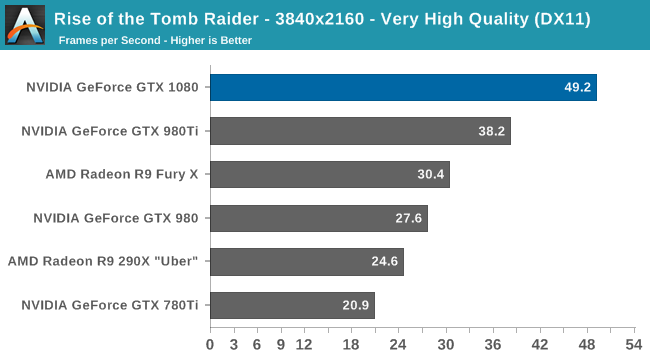

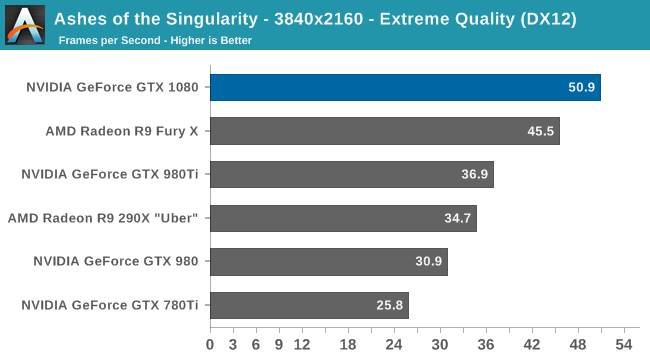

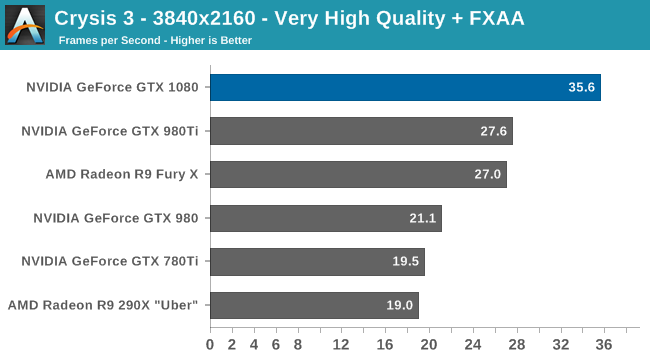
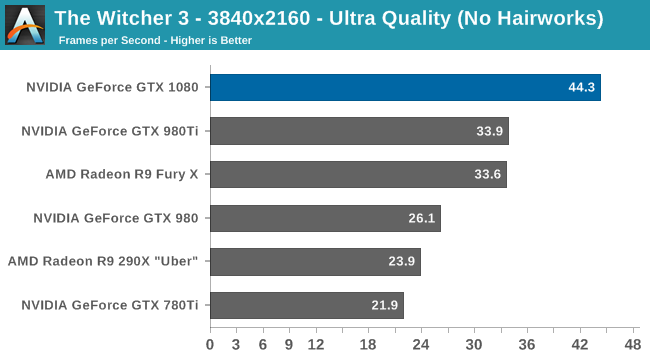
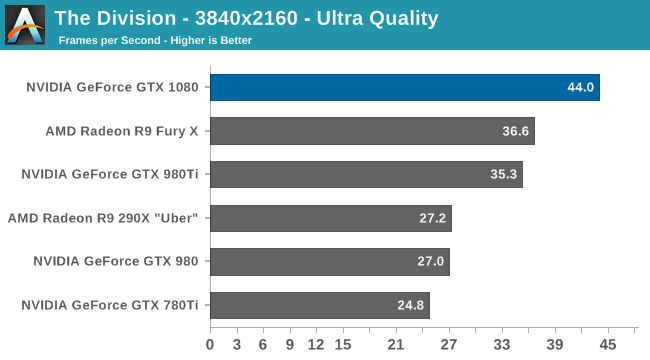
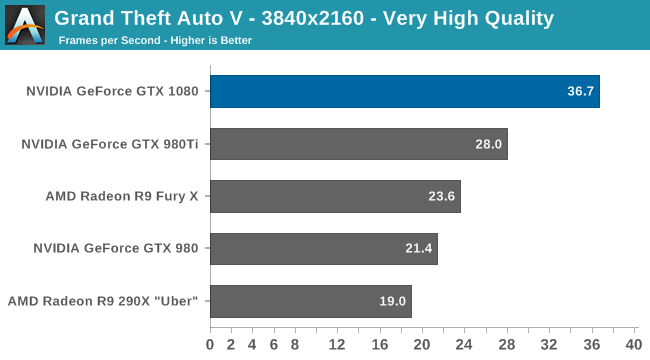
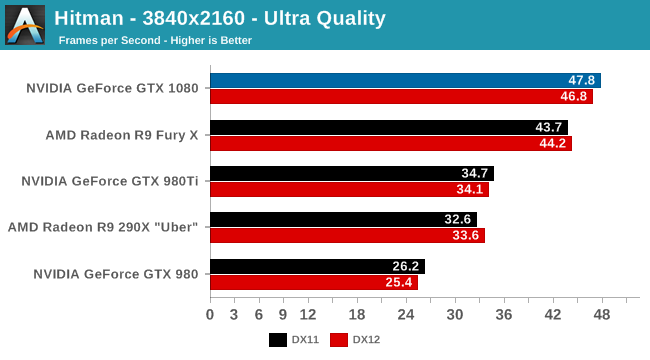
As the first high-end card of this generation to launch, NVIDIA gets to set the pace for the market. At the risk of being redundant the GTX 1080 is now the fastest single-GPU card on the market, and even at 4K it wins at every single gaming benchmark, typically by a good margin. In practice we’re looking at a 31% performance lead over GTX 980 Ti – the card the GTX 1080 essentially replaces – with a similar 32% lead over AMD’s Radeon R9 Fury X. Meanwhile against the slightly older GTX 980, that gap is 70%.
On a generational basis this ends up being very close to the 74% jump in 4K performance going from the GTX 680 to GTX 980. And although the pricing comparison is not especially flattering for NVIDIA here, it should be evident that NVIDIA isn’t just looking to sell GTX 1080 as an upgrade for high-end Kepler cards, but as an upgrade for GTX 980 as well, just 20 months after it launched.
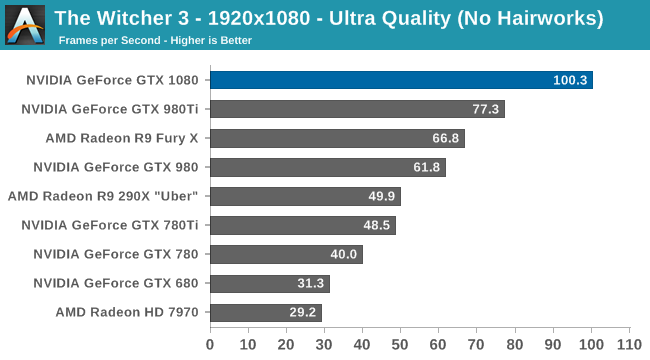
I also wanted to quickly throw in a 1080p chart, both for the interest of comparing the GTX 1080 to the first-generation 28nm cards, and for gamers who are playing on high refresh rate 1080p monitors. Though this will of course vary from game to game, roughly speaking the GTX 1080 should be 3x faster than the GTX 680 or Radeon HD 7970. This is a good reminder of how architectural efficiency has played a greater role in past years, as this is a much larger gain than we saw jumping from 55nm to 40nm or 40nm to 28nm, both of which were much closer to the historical norm of 2x.

Meanwhile when it comes to power, temperature, and noise, NVIDIA continues to execute very well here. Power consumption under Crysis 3 is some 20W higher than GTX 980 or 52W lower than GTX 980 Ti, generally in line with NVIDIA’s own TDP ratings after accounting for the slightly higher CPU power consumption incurred by the card’s higher performance. The end result is that GTX 1080 is a bit more power hungry than GTX 980, but still in the sweet spot NVIDIA has carved out in the gaming market. Broadly speaking, this amounts to a 54% increase in energy efficiency in the case of Crysis 3.
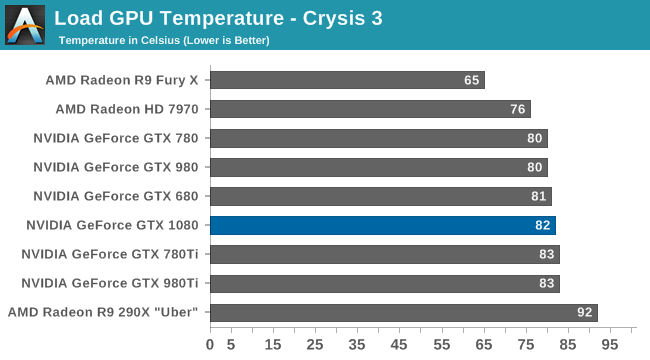
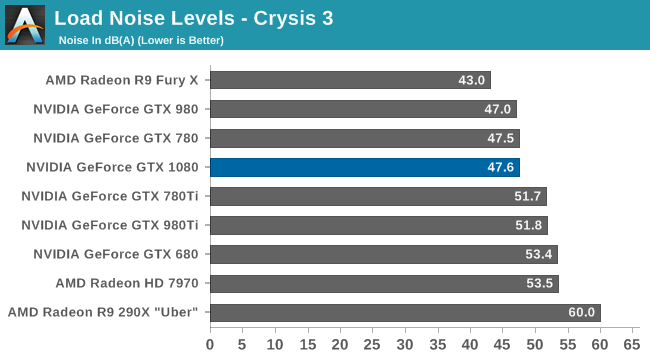
Otherwise from a design perspective the GTX 1080 Founders Edition carries on from NVIDIA’s high-end GTX 700/900 reference design, allowing NVIDIA to once again offer a superior blower-based solution. NVIDIA’s temperature management technology has not changed relative to Maxwell, so like their other cards, the GTX 1080 tops out in the low 80s for load temperature. More significantly, at 47.5 db(A) load noise, the card is on par with the GTX 780 and half a dB off of the GTX 980.
Ultimately NVIDIA has designed the GTX 1080 to be a drop-in replacement for the GTX 980, and this data confirms just that, indicating that GTX 1080’s much higher performance comes with only a slight increase in power consumption and no meaningful change in temperatures or acoustics.


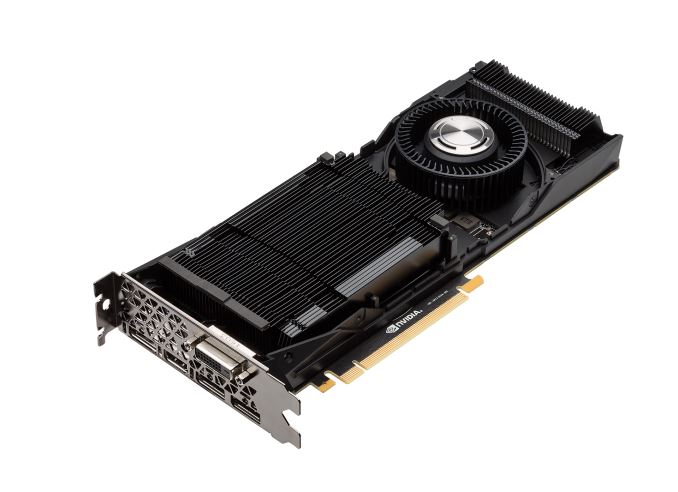








262 Comments
View All Comments
nevcairiel - Tuesday, May 17, 2016 - link
Perf/Watt is higher than any previous generation (ie. efficiency), why does it matter how it gets there?Eden-K121D - Wednesday, May 18, 2016 - link
Is the architecture on decline more specifically IPCBoAdk - Tuesday, May 17, 2016 - link
GTX 780 has a 384bit memory bandwith, not 256bit :)Ryan Smith - Tuesday, May 17, 2016 - link
Thanks.chrone - Tuesday, May 17, 2016 - link
@Ryan Smith and @Anandtech, thanks for including The Witcher 3 benchmark! :DRyan Smith - Tuesday, May 17, 2016 - link
Credit goes to Dan on this one. He took the time to go through it and find a performance-intensive section we could reliably benchmark, which is always a challenge with RPGs.chrone - Wednesday, May 18, 2016 - link
Awesome! Thanks @Dan. :)none12345 - Tuesday, May 17, 2016 - link
So 25-30% faster then a 980ti, few of those were less, few were more. Lets just call it 30%. And it costs about $100 more then a 980ti, so call that 15%.So just call it 15% better value over a 980ti. Thats not very impressive for 28->16nm.
The 1070 will be more interesting to see numbers on. As will AMD's response.
vladx - Tuesday, May 17, 2016 - link
More like 30-40% in most games, only in a few it goes below 30%. Pretty good and a bit better than early expectations.FMinus - Thursday, May 19, 2016 - link
Who runs a stock 980Ti?